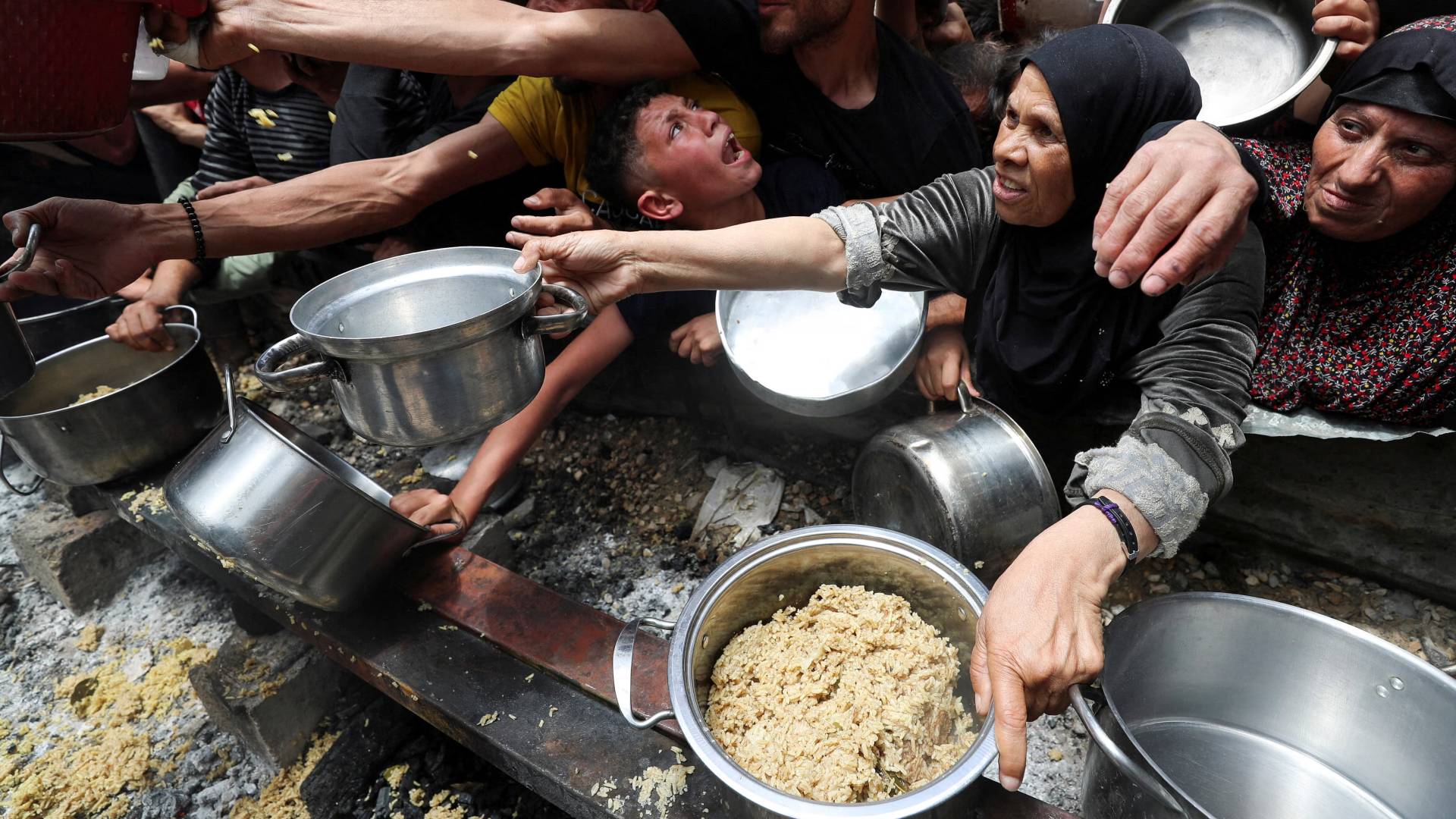Palestinians wait to receive food cooked by a charity kitchen, in Jabalia, in the northern Gaza Strip, May 14, 2025. Reuters
Inside the Gaza Humanitarian Foundation as it begins food aid deliveries
The Gaza Humanitarian Foundation (GHF) began distributing food aid in the Gaza Strip on May 26, 2025—just one day after its founding director resigned, citing concerns over the organization’s independence.
Backed by US and 'Israeli' support, the GHF has established fortified distribution hubs to provide essential supplies to a population devastated by genocide and a prolonged blockade. The foundation's launch has drawn scrutiny, but its mission aims to reach over one million Palestinians with urgently needed assistance.
What is the GHF?
Formed in February 2025, the Gaza Humanitarian Foundation is a non-profit organization registered in both Geneva, Switzerland, and Delaware, USA. Its stated goal is to deliver food, water, and hygiene supplies to Gaza’s 2.1 million residents.
GHF’s operations are centered on secure distribution sites, beginning in southern Gaza. The foundation employs biometric verification to ensure that aid reaches civilians directly. Two US companies—UG Solutions and Safe Rich Solutions—handle logistics and security. The foundation has reportedly secured over USD 100 million in funding from an undisclosed donor, with plans to distribute 300 million meals within its first 90 days.
Leadership, strategic backing
Initially led by US Marine veteran Jake Wood, the GHF experienced an abrupt leadership change when Wood resigned on May 25, citing difficulties maintaining humanitarian neutrality. He was succeeded by interim executive director John Acree, a former USAID official with two decades of field experience.
While the GHF claims operational independence, it was established with involvement from 'Israeli' officials, including Major General Roman Gofman, a senior advisor to Prime Minister Benjamin Netanyahu. The United States has publicly supported the initiative, with US Ambassador Mike Huckabee emphasizing the foundation’s role in preventing aid diversion.
First aid convoy arrives in Gaza
On May 26, the GHF delivered its first truckloads of food to a newly built hub near the Philadelphi Corridor along Gaza’s southern border with Egypt. The organization says it intends to reach 1.2 million Palestinians in its initial phase, with plans to open three more hubs—including in northern Gaza—within the next month.
As of May 27, only one distribution hub is operational. Aid has yet to be visibly distributed to civilians due to logistical complications, though preparations continue. The GHF uses 'Israeli'-coordinated corridors and deploys private security teams to protect its sites. All aid is pre-packaged and verified using biometric data to confirm recipients' identities.
Roadblocks, resistance
GHF’s operations are off to a slow and contentious start. Among the most pressing issues:
- Limited Coverage: With only one hub active, residents of central and northern Gaza must travel long distances to access aid.
- Lack of Coordination with NGOs: Major humanitarian players like the UN, UNICEF, and Save the Children have declined to work with GHF. They argue that existing land routes—particularly through Kerem Shalom—are better suited for aid delivery.
- Security Concerns: Hamas has reportedly issued threats against Palestinians who interact with GHF, accusing the group of serving US and 'Israeli' interests.
- Operational Complexity: The use of private contractors, biometric systems, and 'Israeli' coordination creates logistical hurdles and delays.
- Transparency Questions: The foundation has not disclosed its funding sources or gone through a public selection process. It also lacks an official website and offers minimal public contact information.
- Legal Scrutiny: Swiss authorities are reviewing whether GHF complies with both Swiss and international humanitarian law, following concerns raised by Trial International.




